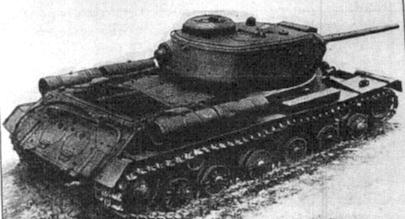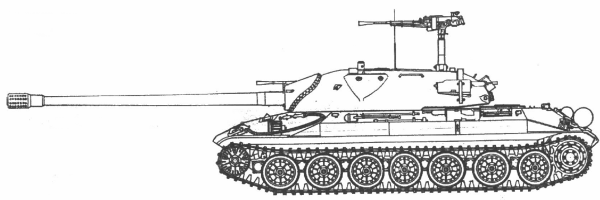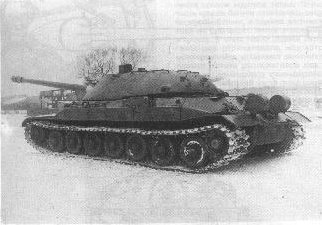

When more firepower was needed, the old KV-1 was fitted with a 85mm L/53 gun. This design was called IS-1 or IS-85. The later IS series was named after Iosef Stalin himself. The IS-1 was never to be produced in large quantity, and production ceased in 1944. The IS-1 was a very important design for the tank development in the future, and its later replacor, the IS-2 and IS-3 became the worldleading tanks in the immediate post-war years. The IS-1 owed much to the old KV design, but had a modified hull, improved suspension and transmission. It was heavily armoured and had a new turret, mounting the same gun as on the T-34/85, SU-100 or later IS-2. The need for greater firepower led to trials with a 100mm gun and a 122mm gun, where the 100mm gun proved superior. Nevertheless, the 100mm gun was just a little bit better than the 122mm gun and there was spare capacity to produce 122mm guns. The new vehicles were now fitted with either a 100mm L/60 gun (IS-100) and 122mm L/43 gun (IS-122) and later, these vehicles were given IS-2 standards. In November 1943, IS-100 and IS-122 tanks were put through firing trials at NIIBT in Kubinka. A captured Panther tank was used as training target and a 122mm round crashed through the frontal armor and clear through the rear armor as well. However, the 100mm gun had better armor penetration. A surplus of 122mm tube production facilities resulted in that the new 122mm gun was now chosen as the main armament to future tanks. Some IS-1's saw service in Ukraine in early -44, operating as a heavy breakthrough tank, but most of them were used up in the Soviet winter campaigns of 1943/44.

By the end of 1944, Kotin developed an improved IS-2, using the same 122mm L/43 gun as the earlier IS-2. The production of this new tank was taken care of by Factory no. 100 at Chelyabinsk. The IS-3 was an excellent tank, and was later to be the "mother" of modern tank designs. There are different thoughts about if and when the IS-3 reached frontal units in 1945. Some sources states that it was issued to units fighting around Vienna, others are saying outside Berlin whilst many other claim that the IS-3 didn't see daylight until May 1945, when it took part in a victory parade in Moscow. The IS-3 kept all the advantages from its predocessor but wore thicker armour plates without a dramatic increase of weight, and its well-designed turret made it even harder to knock out. The frontal plate had no openings for visors, and the driver was seated directly below the turret. The IS-3 was also known as "Pike" due to its narrow front. Handrails were fitted on the side for the tank-borne infantry, and the vehicle were also equipped with automatic smokethrowers for future use. Many experiments and trials were made with the IS-3 in an attempt to adapt some kind of a wading device, but noone was ever standardized. By the end of the war, some 350 IS-3s had been built.

IS-3 preserved at Central Army Museum Frunze, Moscow.
Photo provided by: George Mellinger.


